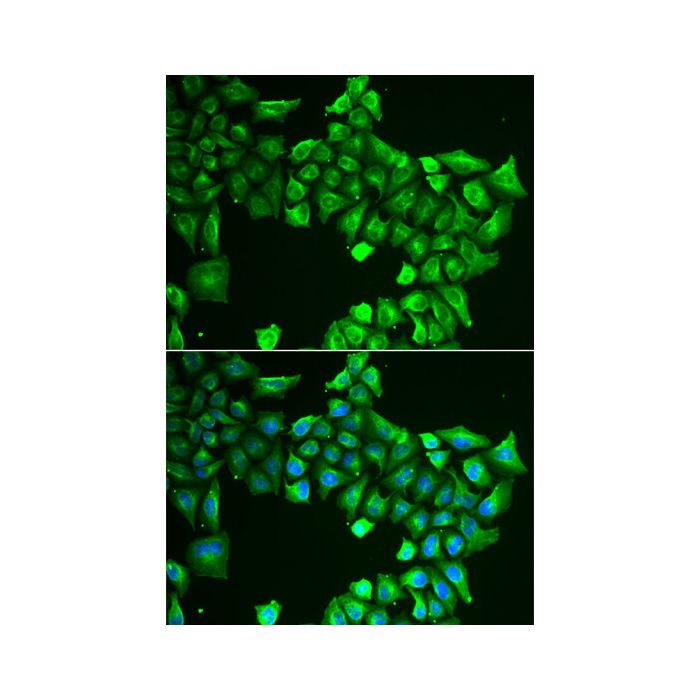ASL polyclonal, anti-human, mouse
€388.00
In stock
SKU
BS8154
Background:
ASL (argininosuccinate lyase), also known as ASAL or arginosuccinase, is a member of the lyase 1 family of proteins and is predominantly expressed in the liver. Localizing to the cytoplasm and existing as a homotetramer, ASL catalyzes the hydrolytic cleavage of argininosuccinic acid (ASA) to fumarate and arginine, an essential step of the urea cycle which is crucial for the detoxification of ammonia. This reaction is also involved in the biosynthesis of arginine. In addition, ASL shares high sequence homology with the avian and reptilian eye lens protein, d-crystallin. Mutations in the gene encoding ASL leads to an accumulation of ASA in body fluids and results in Arginosuc-cinic aciduria (ASAuria), an autosomal recessive disorder that is characterized by hyperammonemia, liver enlargement, convulsions, physical and mental retardation, episodic unconsciousness and dry and brittle hair showing trich-orrhexis nodosa (weak points or nodes in the hair shaft).
Alternative Name:
Argininosuccinate lyase, ASAL, Arginosuccinase, ASL
Application Dilution: IF: 1:10 - 1:100
Specificity: ASL polyclonal antibody detects endogenous levels of ASL protein.
Immunogen:
Recombinant full length Human ASL.
MW: ~ 52 kDa
Swis Prot.: P04424
Purification & Purity:
The antibody was affinity-purified from rabbit antiserum by affinity-chromatography using epitope-specific immunogen and the purity is > 95% (by SDS-PAGE).
Format:
1mg/ml in PBS with 0.1% Sodium Azide, 50% Glycerol.
Storage:
Store at 4°C short term. Aliquot and store at -20°C long term. Avoid freeze-thaw cycles.
For research use only, not for use in diagnostic procedure.
ASL (argininosuccinate lyase), also known as ASAL or arginosuccinase, is a member of the lyase 1 family of proteins and is predominantly expressed in the liver. Localizing to the cytoplasm and existing as a homotetramer, ASL catalyzes the hydrolytic cleavage of argininosuccinic acid (ASA) to fumarate and arginine, an essential step of the urea cycle which is crucial for the detoxification of ammonia. This reaction is also involved in the biosynthesis of arginine. In addition, ASL shares high sequence homology with the avian and reptilian eye lens protein, d-crystallin. Mutations in the gene encoding ASL leads to an accumulation of ASA in body fluids and results in Arginosuc-cinic aciduria (ASAuria), an autosomal recessive disorder that is characterized by hyperammonemia, liver enlargement, convulsions, physical and mental retardation, episodic unconsciousness and dry and brittle hair showing trich-orrhexis nodosa (weak points or nodes in the hair shaft).
Alternative Name:
Argininosuccinate lyase, ASAL, Arginosuccinase, ASL
Application Dilution: IF: 1:10 - 1:100
Specificity: ASL polyclonal antibody detects endogenous levels of ASL protein.
Immunogen:
Recombinant full length Human ASL.
MW: ~ 52 kDa
Swis Prot.: P04424
Purification & Purity:
The antibody was affinity-purified from rabbit antiserum by affinity-chromatography using epitope-specific immunogen and the purity is > 95% (by SDS-PAGE).
Format:
1mg/ml in PBS with 0.1% Sodium Azide, 50% Glycerol.
Storage:
Store at 4°C short term. Aliquot and store at -20°C long term. Avoid freeze-thaw cycles.
For research use only, not for use in diagnostic procedure.
| Is Featured? | No |
|---|
Write Your Own Review

